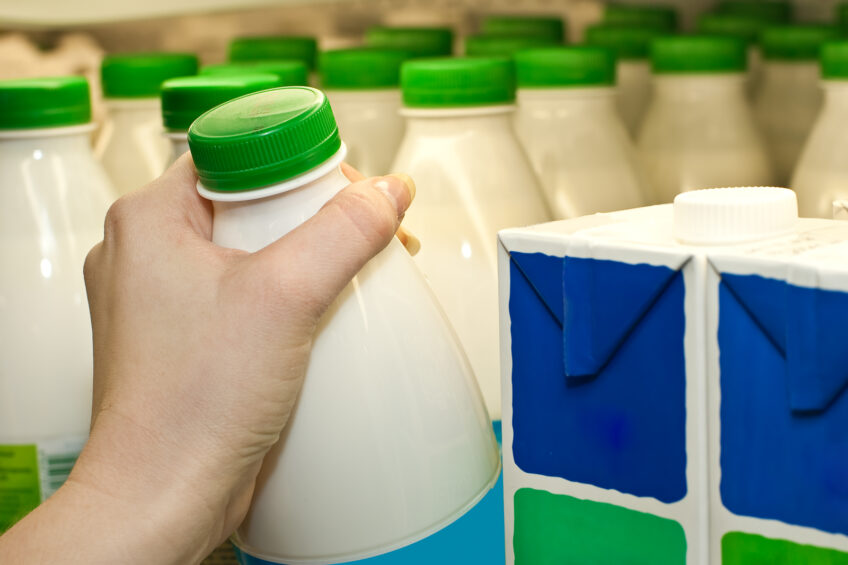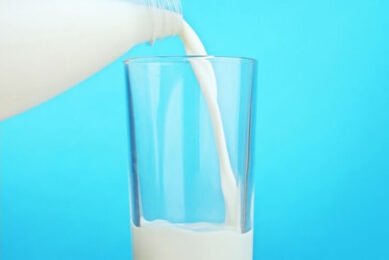More milk, but consumption and prices lag behind

The amount of milk produced in the world does not seem to coincide with current and future demand. Low milk prices being the result. Further boosting the milk consumption by focusing more on the health benefits of dairy products could be the answer to restore the disrupted supply and demand situation.
This was stated at the World Dairy Summit (WDS), which was held this week in Lithuania. That the dairy industry is struggling at the moment was agreed upon by all the dairy experts at the conference, coming from 49 countries. Although the consumption of dairy products is increasing at an international level, the share of dairy products in the diet remains relatively low, especially in Western countries.
On top of that, the milk prices have had a free fall this year. “The demand for dairy products should attract even more strongly than it does now, to ensure that we do not continue to produce and grow at a faster pace than what the market can handle. It is expected that in 2030 5 billion people can afford dairy in their daily diet, compared with 2 billion people at the moment. But it’s up to the industry to make these people enthusiastic to actually buy these dairy products,” said Jeremy Hill, chairman of the International Dairy Federation (IDF), the organising party of the WDS.
More people in the dairy
According to Hill, the focus lies too much on the supply of milk and increasing the supplies, which is now resulting in lower milk prices than the previous years. In 2014, 802 million tonnes of milk was produced, 3.3% more than in 2013. But more milk is only needed if the demand continues to grow. IDF wants to make a greater effort in the coming years to increase the share of dairy products in human nutrition and clarify some myths around dairy products that undermine the health properties of dairy products. Hill: “The last years we have seen an increase in global dairy consumption and we expect this to rise by 13.7% between 2014 and 2023 (now 110.7 kg per person per year). In order to make this happen, and keep this upward trend, we cannot sit and relax. We feel that consumers sometimes don’t have the right and most reliable information about dairy, and results of some ‘scientific’ studies have been proved to be incorrect. Milk fats and milk sugars turn out not to be as bad for human health as previously stated, but the food industry already replacing milk fat with vegetable fats to a great extent.”
Competition from soy and almond milk
CEO of packaging giant Tetra Pak, Dennis Jönssen, also sees the need to promote milk in the daily diet. “We are seeing more competition from other beverages, such as soy milk and almond milk, mainly in the Western countries. Although this is not even milk, consumers see these products quite often as a healthier alternative to real milk. In Asia, the use of the word milk in non-dairy products has already been restricted,” Jönssen explained. In developing countries, this issue is of less importance. Here the demand for dairy products continues to grow, and is thus an important means of preventing an economy of child malnutrition to strengthen these countries. Focus in these countries is to make sure people can actually afford these dairy products.
Balance for the coming years
Further boosting of global demand of dairy products, is according to Jeremy Hill one of the priorities to bring the balance back between supply and demand in the coming months and years. He also foresees a more stable growth of the global dairy sector, which could be positive for the milk prices. According to the latest IDF report, ‘The World Dairy Situation 2015’, which was presented at the conference, milk volumes in 2015 will still continue to weigh heavily on the market. The inventories will become bigger and it is not (yet) known when these stocks come back on the market. In the meantime, most global players in dairy keep on growing. The top 10 now consists of Lactalis, Fonterra, Nestle, DFA and FrieslandCampina, with some companies themselves double-digit growth (percentages) show. One also sees an increase in the percentage of milk volume that is traded on the world market (currently 9%). The trade in cheese has fallen sharply, mainly due to the Russian boycott. A recovery in milk prices in 2015 will therefore not be realistic.
The full report ‘The World Dairy Situation 2015 (bulletin of the IDF n°481/2015)’ can be ordered at the IDF website.
Join 13,000+ subscribers
Subscribe to our newsletter to stay updated about all the need-to-know content in the dairy sector, two times a week.










